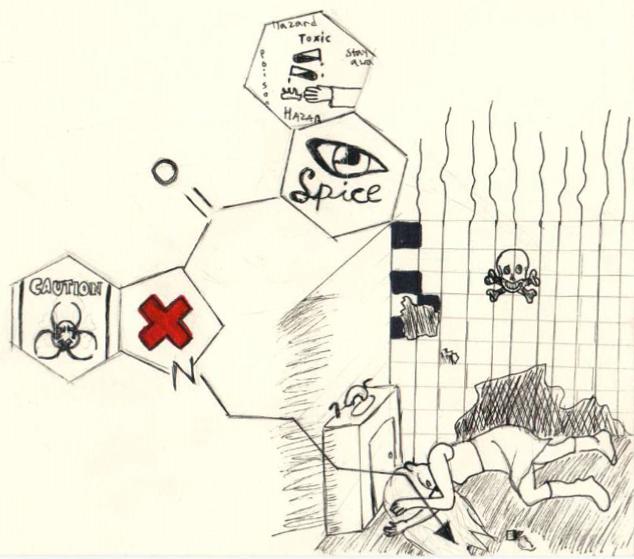What are you smoking?
Teens know they are getting high on spice, but they are ignorant to the consequences of the drug.
A deadly concoction – Spice is like a box of chocolates, you never know what effects you’re going to get.
It is the traditional you jump, I jump. It’ll be fine. Come on.
So you both jump.
Plot twist: you don’t know what you’re jumping into and then… splash. You plummet into water, and you don’t know how to swim. But your “friend” does.
So you are both in the water, and I bet you can guess who the survivor is.
When you smoke spice, otherwise known as K2, or synthetic marijuana, you take the jump. But spice is no friend and its effects are unpredictable.
Spice is the second highest drug problem next to marijuana for young adults. According to The National Institute on Drug Abuse, marijuana is used by 34.6% of high school seniors while spice is used by 11.3%.
“You don’t know what pre-existing conditions you have in your body until you test it to the limit with these drugs and all these chemicals,” said Angela Andrade, Deputy of the Orange County Sheriff Department. “If you already have something that you weren’t aware of, it can make it completely worse.”
Spice is experimental, since one batch can vary from the next, and can change in chemicals and potency. In effect, your body becomes a guinea pig each time you smoke the drug.
Hospitalization is not uncommon for teenagers who smoke this “fake pot.”
“Parents are finding [their kids] in their room passed out and they don’t know what is wrong with them,” Andrade said. “In one instance, parents found their son unconscious, took him to the hospital, he had brain damage and ended up dying. They even found the spice packet still in his pocket.”
That empty packet of spice was all they needed to know what had taken 19-year-old Connor Eckhardt’s life. Eckhardt, a Roseville, Calif. resident, had previously used substances considered much more “hard-core,” such as heroin, but the drug that killed him was spice.
Spice use does not always result in death, but users could instead experience anxiety attacks, extreme paranoia, heart attacks, seizures, and suicidal thoughts.
“When talking about the dangers, not only physically, but with mental stability, people will see things, hallucinate, and will want to cause harm to themselves and maybe even others,” Andrade said.
Furthermore, spice is legal and therefore easily accessible and cheap. It can even be purchased online. Manufacturers lure consumers with package design and flavors like watermelon, cotton candy and pineapple express. Even the common street name — “bliss” — paints an eerily comforting picture.
In reality, this designer drug isn’t a batch of different spices ground together, but instead several psychoactive artificial cannabinoids sprayed on herbs.
Andrade added that there is no regulation of chemical ingredients or packaging. For example, one research experiment found that items listed on the package weren’t even present. Even if a teen were to read the ingredients on the spice packet before deciding to get high, they would still be unaware of everything that will enter their blood stream.
“You don’t know the effects,” she said. “You don’t know what you are taking.”
With so much unknown, is the jump really worth it?

